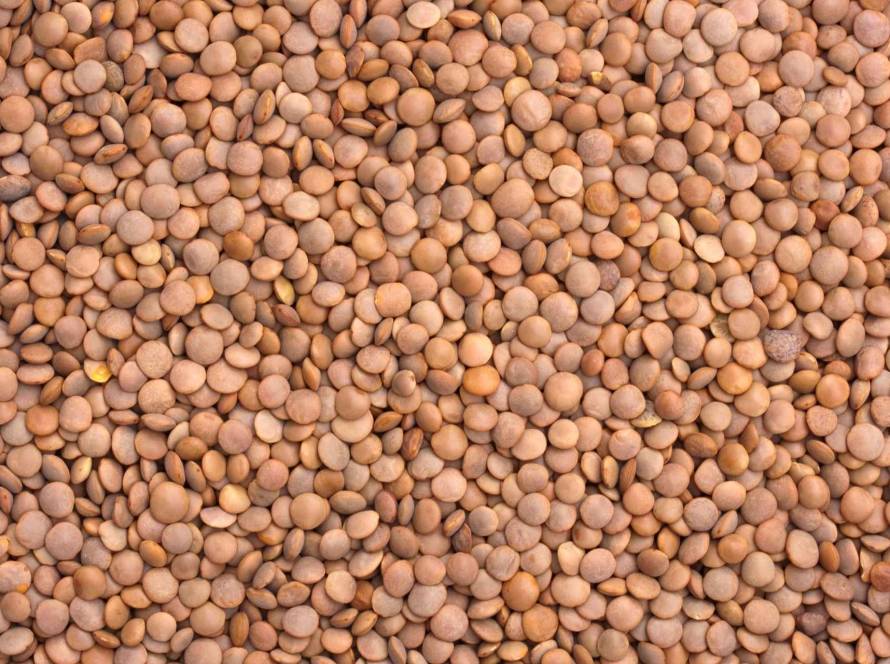People often ask if marine collagen works better than bovine collagen. The question matters because collagen makes up an impressive 30% of all proteins in our bodies. This protein stands out as the most abundant in mammals and plays a vital role in keeping everything from our skin to bones structurally sound.
This piece dives into what science tells us about these two popular collagen sources. We’ll break down their structural differences, bioavailability factors and clinical outcomes from recent studies.
Which is more effective for health: marine or bovine collagen?
Marine collagen isn’t necessarily better than bovine collagen, it depends on our specific health goals. Marine collagen, made from fish, is primarily Type I collagen and has higher bioavailability, making it especially effective for supporting skin elasticity, hydration and fine lines. Bovine collagen, sourced from cows, contains both Type I and Type III collagen, offering broader support for joints, muscles and gut health.
If we’re focused on beauty and fast absorption, marine collagen may be ideal. If our goals include joint strength and tissue repair, bovine collagen might be more suitable.
What is collagen and why does it matter?
Collagen makes up about one-third of all protein in our bodies. This makes it the most abundant protein humans have. This remarkable protein builds the foundation for many body tissues and their functions.
Collagen’s role in skin, joints and connective tissue
Our body uses collagen as the main building block for skin, hair, nails, tendons, cartilage and bones. Collagen makes up 70-80% of skin tissue’s structure. This gives our skin the strength and elasticity it needs to work properly. It also works together with substances like hyaluronic acid and elastin to keep skin moist and full.
Collagen does more than help our skin. It makes up about 60% of cartilage, which helps cushion our bones when we move. This explains why people often feel joint pain and move less easily when their collagen levels drop. Our blood vessels, muscles and internal organs also need collagen for support.
Why collagen production declines with age
Our body makes less collagen as we get older. Production drops every year, starting in our mid-20s. Women’s skin collagen levels can drop by up to 30% by menopause, according to studies. This happens because fibroblasts (cells that make collagen) age and get less mechanical stimulation in older tissue.
Several things can speed up collagen breakdown. Sun exposure, smoking, too much alcohol lack of sleep all play a role. Aging fibroblasts don’t multiply as well and release different substances than before. These changes lead to many visible signs of aging.
The rationale behind collagen supplementation
Collagen plays a vital role in our body and naturally decreases with age. Taking supplements might help maintain our body’s structure. Most supplements contain peptides or hydrolyzed collagen that our body absorbs more easily.
Our body can’t absorb whole collagen. It needs to break down into peptides first. These peptides can then help form new collagen in different parts of our body like cartilage, bone, muscles and tendons.
Research about collagen supplements keeps growing. Studies suggest they might help improve skin elasticity, joint movement and bone density.
Understanding marine collagen: source, structure and benefits
Marine collagen comes from fish skin, scales and bones. These parts make up approximately 30% of fish processing waste. This process uses byproducts that would normally go to waste and is a more eco-friendly option than land-based sources. Jellyfish have become another good source since their organic matter is mostly collagen. Sea cucumbers and some crustaceans also have collagen we can extract, though not as much.
Where marine collagen comes from
The fishing industry creates a lot of waste each year, about 25% of total production. This makes fish discards a rich source of collagen. Scientists extract collagen through acidic, enzymatic and ultrasound-assisted methods. New eco-friendly processes like supercritical fluid extraction are now available. These methods can get more than 50% collagen from fish waste. This turns previously worthless materials into something valuable.
Type I collagen and its relevance to skin and bones
Marine sources are rich in Type I collagen. This type makes up about 90% of human body collagen. Type I collagen gives vital structural support to skin, tendons, bones and blood vessel walls. Its triple-helix structure comes from a repeating amino acid sequence (Gly-X-Y)n. Glycine shows up regularly while proline and hydroxyproline often take the X and Y spots. This structure gives collagen amazing tensile strength that keeps tissues intact.
Marine collagen benefits: bioavailability and absorption
Marine collagen stands out because it’s easier for our bodies to absorb. Its lower molecular weight compared to bovine sources means better absorption. Collagen peptides reach their highest levels in plasma within 100-130 minutes, according to studies. Pro-Hyp becomes the most common peptide found in plasma even though products don’t contain much of it initially.
Environmental and dietary considerations
Marine collagen has several practical benefits. People following various religious diets can use it more freely than bovine or porcine sources. Unlike bovine collagen, marine sources don’t carry risks of transmissible spongiform encephalopathy (TSE) or bovine spongiform encephalopathy (BSE).
Bovine collagen: composition, types and use cases
Bovine collagen comes from cattle byproducts and has a unique makeup that sets it apart from marine sources. We can find it everywhere and its specific collagen types make it popular in many health applications.
Source and extraction of bovine collagen
Cow hides, bones and other cattle byproducts are the main sources of bovine collagen. The extraction starts with a cold water wash of the skin. Workers then cut it into smaller pieces and use chemicals to break down unwanted materials. Scientists use different methods to extract collagen. These include acid-solubilization (AS), acid-enzyme solubilization (AES1) and modified acid-enzyme solubilization (AES2). The AES2 method gets better results with up to 75.13% collagen from cow hides.
Scientists need to watch the process carefully. The amount of acetic acid makes a big difference in how much collagen they can extract. Tests show 0.7 M concentration works best. Many labs now prefer enzyme hydrolysis because it targets specific areas and doesn’t damage the collagen structure as much.
Type I and III collagen: what they support
We’ll find mostly types I and III collagen in bovine sources. Type I makes up more than 90% of our body’s collagen. It gives structure to our skin, tendons, blood vessel walls, organs and bones. Type III works with Type I in our artery walls, skin and intestines. Our body uses both types to heal wounds and form scars.
These two types of collagen work great together in supplements. They give our body what it needs to fix damaged ligaments and tendons.
Applications in joint, gut and muscle health
Bovine collagen shows real promise for joint health. A 13-week study with 30 people who had knee osteoarthritis found something interesting. People who took 5 grams of bovine collagen twice daily felt much better. Research shows collagen supplements can help with osteoarthritis no matter what dose, type or brand we use.
The results look good for muscle growth too. A small study of men showed better results when they combined collagen peptide supplements with strength training for 12 weeks. They built more muscle and got stronger than those who didn’t take collagen. Bovine collagen also helps keep our gut healthy by supporting the gut lining. This can boost our digestion and help our body absorb nutrients better.
Marine vs bovine collagen: what the science says about absorption
Scientific research comparing how our bodies absorb marine and bovine collagen shows key differences that affect how well they work. The way these two collagen sources are built and what they’re made of plays a big role in how the body uses them.
Comparative studies on bioavailability
Marine collagen works better than bovine sources when it comes to absorption. Research shows our body absorbs marine collagen more efficiently than bovine or porcine collagen. This happens because of how differently they’re structured at the molecular level.
A clinical study looked at what happens after taking a single dose of marine and bovine collagen. Both types showed up in blood plasma, but with some differences in specific peptides. The study showed porcine collagen had higher levels of total hydroxyproline than fish collagen (1.2 times more). Bovine collagen with lower molecular weight showed higher levels compared to its heavier counterpart.
Peptide size and absorption efficiency
The size of collagen molecules determines how well our body absorbs them. Marine collagen has a smaller particle size compared to other types. This means our body can absorb and use these peptides more quickly.
Clinical outcomes: skin, joints and bone health
Looking at skin benefits, researchers analyzed many controlled trials and found that hydrolyzed collagen supplements boost skin hydration (0.63 effect size) and elasticity (0.72 effect size). Taking it longer than 8 weeks worked better (0.59) than short-term use (0.39).
Marine collagen seems to work especially well for joint health. It helps make more type I and type II collagen, which our skin and cartilage need. Studies show it might help reduce inflammation and ease joint pain in people with osteoarthritis.
Is marine collagen better than bovine collagen study insights
Marine collagen stands out for hair growth. Studies show it works better at extending the growth phase by supporting specific stem cells and helping progenitor cells multiply. Bovine collagen works differently, it helps hair follicle stem cells by increasing K15+ cells and keeping stem cells alive longer.
Marine collagen works so well because it contains lots of hydroxyproline and hydroxylated proline. These amino acids are vital for fighting oxidative stress.
Marine and bovine collagen both provide great benefits, though they work differently because of their unique molecular structure. Marine collagen gets absorbed better, up to 1.5 times more effectively than bovine sources because of its smaller particles. Our skin elasticity, hydration and hair growth might see better results with this improved absorption rate. Bovine collagen contains types I and III collagen that work together especially well for healthy joints, muscle growth and gut function.
The question “Is marine collagen better than bovine collagen?” doesn’t have a simple answer. Each type comes with its own set of benefits that line up with different health goals. The best choice comes down to our specific health needs, diet restrictions and budget.


